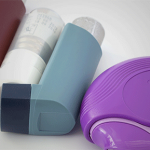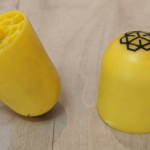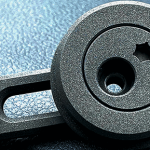- Home
- 3D Printing
- What do we mean by additive prototyping?
What do we mean by additive prototyping?
Engineers and designers are careful with their choice of words. For example, to us, the terms ‘tolerance’ and ‘redundancy’ do not mean the same as they would for the average person. By using the correct language when communicating with each other, engineers and designers avoid ambiguity and confusion. However, technology evolves over time, and language is equally fluid. In this article, we will set out what we mean by a term often used at Prototype Projects: additive prototyping.
Evolution
Practical technologies for additive manufacturing started to be developed in the 1980s, 1990s and 2000s. At the same time, the terminology evolved too. Of course, researchers and equipment suppliers were eager to coin their own phrases for the technologies they developed. This is how we ended up with LOM (Laminated Object Modelling), SLA (Stereolithography Apparatus), SLS (Selective Laser Sintering), DLP (Digital Light Projection), PolyJet and FDM (Fused Deposition Modelling), as well as more generic terms such as Rapid Prototyping, Rapid Manufacturing, Additive Manufacturing and 3D Printing.
‘3D Printing’, today, tends to cover all types of additive technologies. This is perhaps due to it being adopted by the mainstream media for non-technical audiences who can readily understand the concept of printing in three dimensions. If only the non-technical audiences (and journalists) had an inkling of the complexity of the various technologies referred to so broadly as ‘3D printing’!
Additive Prototyping
Here at Prototype Projects, we like to use ‘Additive Prototyping’ to describe a subset of the services we offer. As you may know, we have multiple 3D printing technologies in-house, as well as CNC machining, vacuum casting, laser cutting and a team of highly skilled model makers.
Our in-house 3D printing technologies are SLA, DLP, PolyJet, SLS and the latest addition to our portfolio is PµSL (Projection Micro Stereolithography). Depending on the application, all of these can potentially be used for producing prototype or end-use parts. And the same is true of CNC machining, vacuum casting, laser cutting and model making.
Consequently, referring to ‘Additive Prototyping’ is a useful way to describe prototyping that utilises additive rather than other production technologies.
But what is ‘prototyping’?
We have already touched on the way words can mean different things to different people. ‘Prototype’ can be interpreted as a physical item produced as part of a product development programme. On the other hand, if the project is a one-off special-purpose machine or research instrument, each bespoke part made for it can justifiably be described as a prototype because it is the first – and definitive – version of the part.
Furthermore, it is easy to fall into the trap of thinking prototypes are always one-offs. In fact, customers frequently ask us to make multiple prototypes for evaluation or testing.
In other words, ‘prototype’ does not necessarily refer to something for pre-production or development purposes; nor does it mean it is a unique, one-off part.
Whatever your usage of ‘prototype’ and ‘prototyping’, we are happy to apply the term Additive Prototyping for 3D printed parts.
Additive Prototyping options
We have five 3D printing technologies in-house for customers needing additive prototyping. There is plenty more information on our website about each one, but we can summarise them and the materials we stock here – you can download our materials datasheets here.
SLS (Selective Laser Sintering)
This technology features a laser beam that fuses fine powder. The material we use is PA2200 Nylon, so the resultant parts have good accuracy, surface finish and strength. Parts are slightly porous, but they can be sealed by lacquering.
- PA2200 Nylon (base PA12) – versatile white material with high strength, stiffness, abrasion resistance and long-term dimensional stability
SLA (stereolithography)
A high-quality 3D printing technology that builds parts by using a spot of laser light to trace a path and cure a photopolymer resin. We offer a choice of resins, enabling parts to benefit from a range of material properties. The surface finish is good but, if required, hand polishing and lacquering or painting can improve the finish further.
- Accura ClearVue – water-clear, similar properties to polycarbonate, with good moisture resistance
- Accura 25 – cream-coloured with good flexibility, similar properties to polypropylene
- Accura Xtreme – grey-coloured, similar properties to ABS
PµSL (Projection Micro Stereolithography)
Compared with other 3D printing technologies, PµSL achieves far better part accuracy and exceptionally smooth surfaces. Parts built with PµSL are smaller than those built with other technologies but PµSL can 3D print parts that cannot be made using other manufacturing technologies, including CNC machining.
- HTL resin – high temp low viscosity, high-performance engineering material with excellent strength and rigidity
- BIO resin – biocompatible resin suitable for non-implantable medical applications
- RG resin – durable engineering material suitable for functional testing and end-use parts
PolyJet
This technology utilises printheads rather like an inkjet printer. Multiple materials can be printed, so parts can have different material properties in different areas, or materials can be combined to create intermediate material grades. PolyJet materials can simulate relatively stiff and strong materials through to soft elastomers, as well as clear materials.
- Vero White – white, relatively stiff and strong
- Agilus30 – black, rubber-like
- Vero Clear – clear, otherwise similar to Vero White, often used to simulate acrylic
DLP (Digital Light Projection)
Parts are built by using digital masks to expose selected areas of the surface of a photopolymer resin to light. As with SLA, parts are built layer by layer, but DLP is quicker than SLA because entire layers are cured in a single, short exposure. We also offer a far wider range of materials for DLP than we do for SLA.
- Hi Temp 300-AMB – translucent amber material with high strength, stiffness and temperature resistance
- Hi Temp 150C FR Black – UL94 V0 rated flame-retardant black plastic with >150˚C heat deflection temperature
- Pro-BLK 10 – black material with high stiffness, good thermal resistance (70 °C), and excellent surface quality and repeatability
- Rubber 65A BLK – mid-tear strength, production-grade rubber combined with Shore 65A hardness and a high elongation at break
- Tough 60C White – white plastic for long-term use parts with a good combination of impact strength, elongation, and tensile strength
- Tough Clear – clear, production-grade material engineered to offer long-term, environmental UV, humidity stability, chemical compatible, and has thermoplastic-like mechanical properties
Finishing options for additive prototype parts
PµSL parts are almost always used ‘as is’, with no finishing carried out apart from cleaning. Parts built with other 3D printing technologies can be finished in a variety of ways. The options depend largely on the material, while the final choice is determined by the part’s intended use.
If additive prototyping is being used for a proof-of-principle model, then the parts are unlikely to require any secondary finishing operations. However, a blackout/RFI/EMC coating might be applied to internal surfaces and or threaded inserts can be fitted for functional reasons.
On the other hand, if appearance is important, the prototype part can be given a light bead blast, sanded and lacquered, or primed and painted. Further options include finishing with a rubberised ‘soft feel’ coating, vacuum metallisation, and SLS parts can be dyed any RAL or Pantone colour.
Does additive prototyping have limitations?
Additive prototyping is extremely versatile, especially when you consider the many different technologies and materials available, but it is not a panacea. When additive prototyping is not suitable, perhaps because of the material properties required or the cost-per-part being prohibitive, there are alternatives. These include CNC machining, vacuum casting, laser cutting and traditional model making. Fortunately, we have all of these at Prototype Projects, so we can always give an unbiased view as to which technology – or combination of technologies – would be best for a customer’s parts.
Talk to us
If you need additive prototyping or would like to explore whether it might be suitable for your parts, talk to our experts by calling 01763 249760.





